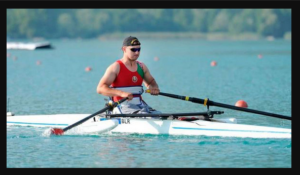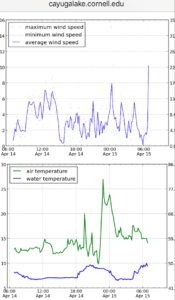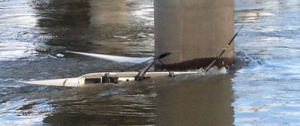Rowing accidents in which minor injuries and little or no damage occurs are common; serious accidents resulting in significant injuries or damage are fewer. Fatal accidents seem rare, but four US rowers drowned in 2021, three more rowers drowned in 2022. None of those who drowned was wearing a safety vest. More than two dozen fatalities are now listed on this site.
Some of these accidents have resulted from the failure of rowers to follow recommended safety guidelines, poor judgment, or coaches failure to exercise proper duty of care. Sometimes they’ve been precipitated by medical events. Sometimes, as in cases of equipment failures or collisions with motorboats — they have been beyond the control of the rowers and coaches.
It is unknown how many rowing accidents occur in the United States each year but it is well known that they happen at all levels from middle schoolers to masters and from novices to Olympians.*
It is worth noting that most fatal accidents appear to have occurred on cold water. None involved a rower wearing a PFD.
* * *
2022: On September 26th it was reported that a second child has died from the September 15th accident on Lake Fairview, FL and the names of both boys have been released. The body of Gavin Christman, 13, was recovered by dive-teams twenty-four hours after the accident. Langston Rodriguez-Sane, 12, was rescued by teammates after their shell overturned in a lightning storm and taken to hospital, where he has now reportedly died.
2022: Fifty-eight year old James Addison drowned while sculling on the Mohawk River on September 17th in upstate New York. He was reportedly a retired naval officer, found still secured in his shell and not wearing a PFD.
2022: A middle school rower is dead and a second child in critical condition following a lightning strike in Orlando, Florida, on September 15th. They were in a coxed four with the North Orlando Rowing Club on Lake Fairview Shen lightning struck. The other three members of the crew were apparently uninjured.
2021: Leo Lehner, age 15, drowned after apparently suffering a seizure while rowing with his high school team in Dayton, Ohio. According to the Dayton Daily News Leo’s father told police that Leo “had a long history of epilepsy and had seizures ‘during his most calm moments.‘” He reportedly was not wearing a PFD.
2021: A sculler was severely injured while passing under a low bridge on a canal in the Netherlands. It appears the rower ducked to row under the bridge, but straightening up before clearing the bridge and capsized. The rower was rescued by bystanders and resuscitated by the time EMS arrived, but may have suffered a spinal injury. [ https://www.weertdegekste.nl/2021/08/persoon-gereanimeerd-na-val-uit-boot-bij-biesterbrug/ ]
2021  Two members of the Iowa State University crew club, Yaakov Ben-David, 20, and Derek Nanni, 19, drowned in central Iowa on Sunday, March 28th. Three other members of the team survived and were hospitalized briefly. The team was reportedly rowing an unaccompanied coxed four, capsizing as the winds picked up over 20mph and they turned to return to the boathouse. One resident of the 240-acre Little Wall Lake who witnessed the accident was able to rescue one of the survivors with a small kayak. A second survivor attempted to swim to shore and was helped by another resident. The third survivor was able to make it to shore unassisted, but exhausted and hypothermic.
Two members of the Iowa State University crew club, Yaakov Ben-David, 20, and Derek Nanni, 19, drowned in central Iowa on Sunday, March 28th. Three other members of the team survived and were hospitalized briefly. The team was reportedly rowing an unaccompanied coxed four, capsizing as the winds picked up over 20mph and they turned to return to the boathouse. One resident of the 240-acre Little Wall Lake who witnessed the accident was able to rescue one of the survivors with a small kayak. A second survivor attempted to swim to shore and was helped by another resident. The third survivor was able to make it to shore unassisted, but exhausted and hypothermic.
2021  Stephen Crouch, 71, drowned on the St. Lucie River in Florida on January 13th. He was rowing a single when he left the Treasure Coast Rowing Club around 6:45 am wearing spandex and a shirt. He was reportedly lean, fit, competitive, “extremely knowledgeable about the river, where to be, as far as how to handle boat wakes,” and “usually didn’t wear a life-jacket.” His boat was found upright with the oars in it.
Stephen Crouch, 71, drowned on the St. Lucie River in Florida on January 13th. He was rowing a single when he left the Treasure Coast Rowing Club around 6:45 am wearing spandex and a shirt. He was reportedly lean, fit, competitive, “extremely knowledgeable about the river, where to be, as far as how to handle boat wakes,” and “usually didn’t wear a life-jacket.” His boat was found upright with the oars in it.
2020: Simmons College rowing coach Nikolay Kurmakov reportedly died of a heart attack

credit Simmons.edu
while sculling on the Charles River in Boston on October 2nd. Coach Kurmakov was 68 years old and a former Ukrainian rowing champion.
2020: A 58-year-old man in a rowing scull “slipped beneath the water” after impact with a jet-ski on Lake Muskoka, Ontario. His body was later recovered by divers. The cause of the collision is undetermined.
2019: Para-rower Dzmitry Ryshkevich drowned after capsizing while training at the World Racing Championships in Linz, Austria.
 Local authorities reported that safety boats were close by at the time of the accident, that he was able to free himself from his safety belt and shoes, and that he was clinging to his shell as the safety boats approached but slipped under the water and drowned.
Local authorities reported that safety boats were close by at the time of the accident, that he was able to free himself from his safety belt and shoes, and that he was clinging to his shell as the safety boats approached but slipped under the water and drowned.
2019: Cornell University retrieved a capsized shell from Cayuga Lake in mid-April, apparently from an accident involving high school rowers at the Cascadilla Boat Club.
 Data from Cornell’s weather station on the lake shows a dramatic wind spike from 4 to 22 mph about the time of the incident. Water temperatures were just below 50f.
Data from Cornell’s weather station on the lake shows a dramatic wind spike from 4 to 22 mph about the time of the incident. Water temperatures were just below 50f.
2019: Sudden winds on the Charles River capsized two eights on cold, choppy water in April. Reports differ on the number of rowers involved but one crew appears to have been rescued by the coaching launch while the other MIT crew was rescued by the Cambridge Fire Department.
2019: Two University of Oregon eights and their coach’s launch all swamped when sudden winds turned a calm lake into four-foot swells. “I’ve seen conditions change pretty quickly on this lake before but not that dramatically. It’s never gone from flat to that dangerous that quickly,” the coach said. First responders rescued everyone and treated several for hypothermia on scene.
2019: A 12 year old rower’s hair apparently became entangled in the rigging when her coxed quad capsized on River Shannon, trapping her under the boat in swift current. CPR was performed by fire and rescue personnel after they arrived on scene and she was transported to hospital, but suffered permanent injuries. A coaching launch was accompanying the shell at the time of the accident but unable to extricate her. The full report of the Irish Marine Casualty Investigation Board was released on 3 November, 2021 and is available here.
2019: Five young rowers were rescued by the RNLI after their boat overturned in Aberdeen Harbour. The girls were credited for remaining calm, remembering their safety drills, and climbing on their boat to stay out of the water. They were rescued by RNLI lifeboat, coastguard rescue team, and an offshore industry rescue helicopter. All were well.
2018: It was a miracle, Olympic Champion Mahe Drysdale said, that everyone walked away uninjured after his shell penetrated a novice eight crossing a race course at the start of a race in Germany. “The kids (got) one hell of a fright.”
2018: A rower was rescued by a construction crew after being swept away from an overturned four on the upper Mississippi River. As reported by WQAD-TV on June 8th, the bridge construction crew was preparing for “man-overboard” drills as part of its daily safety briefing when they noticed the four struggling in the current and then capsizing. Three rowers managed to hold on to the shell while the fourth was swept away by the swift current. The construction crew launched two boats and rescued all four rowers. “It could have been really bad,” one of the rescuers said, “because they didn’t have any life jackets.”
2018: A high school four from Grosse Isle, Michigan, reportedly capsized and rowers were promptly rescued by the chase boat and transported to shore for hospital evaluation by a Coast Guard vessel. Reports from the Associated Press and a local TV station conflict regarding the cause of the accident and whether it occurred on Friday evening, April 20th, or Saturday morning, April 21st.
2018: A girls’ eight from Bishop O’Connell High School apparently capsized in the Potomac River and the coach’s launch capsized while trying to shuttle them to safety. Four of the students and the coach were rescued by a commercial water taxi and then transported by EMS to hospital, reportedly for hypothermia. (NOTE: there are conflicting reports about the number of people involved in this incident and the details of the accident. Information will be updated after official reports have been reviewed.)
2018: Coach John Hooton, former coxswain at Temple University, coach of the USA Women’s National Team, and swimming coach, fell out of his shell on Lake Natoma, CA, in early March while training for a regatta.  It was reported that a friend rowing with him tried to save him “while he flailed in the water” but was unable to rescue him; and that the water temperatures were cold and “he was not wearing a life jacket.”
It was reported that a friend rowing with him tried to save him “while he flailed in the water” but was unable to rescue him; and that the water temperatures were cold and “he was not wearing a life jacket.”
2018: Eleven rowers had to be rescued after their eight, and then their coaching launch, hit a barge on the river Severn.
2017: The Detroit News reported that “Michigan women’s rowing team was involved in a hit-and-run accident with a speedboat that left the UM boat in pieces and forced nine team members to swim to shore…We are very fortunate we didn’t lose a student out there” a police spokesman said. One student suffered undisclosed injuries.
 . 2017: Mohammed Ramzan never resurfaced after being caught by an ejector crab and thrown overboard from his eight oared shell as a freshman with Northwestern University’s rowing club on the North Channel of the Chicago River. Water temperatures in April were in the forties.
. 2017: Mohammed Ramzan never resurfaced after being caught by an ejector crab and thrown overboard from his eight oared shell as a freshman with Northwestern University’s rowing club on the North Channel of the Chicago River. Water temperatures in April were in the forties.
2017: British Rowing reported that three rowers died in the Netherlands in March, 2017.
2016: Fifteen-year old Rosie Mitchell collapsed while rowing on the Thames with the Kingston Rowing Club on September 17th, apparently of a sudden cardiac arrhythmia.
2016: Five high school students were hospitalized after a sudden change in the weather swamped several boats on the 43f Hudson River.
2016: The Harvard crew had to be rescued during the 150-year old Harvard-Yale Regatta after it swamped in 35 mph winds.
2016: Six students were hospitalized and two refused treatment after one four capsized trying to rescue another four in the Hudson River; all eight rowers abandoned their shells, two swimming to one shore and six to the other.
2015: Two high school boats were lost in the dark in Mamaroneck, NY; the rowers were rescued by authorities.
2015: Four high school girls were hospitalized in Connecticut after their eight was struck by a jet-ski.
2015: Michael Hill, a rowing coach in West London, apparently fell overboard and drowned while coaching young rowers from the Thames Rowing Club. 
2015: Oxford Women’s Boat Race crews swamped while training on River Thames. A Royal National Lifeboat Institution spokesman said “While we have rescued quite a number of rowers over the years, this is the first time I’ve been involved in helping such a prestigious team.”
2014: An Oregon State University eight was destroyed hitting concrete abutment on Willamette River; all rowers were rescued promptly.

2014: In New Zealand it was reported a rowing coach lost control of his skiff in Otago, seriously injuring himself and two of the high schools rowers on an eight he was coaching.
2014: BBC reported that a coaching launch overturned and the coach from Shiplock College was swept over a dangerous dam after trying to help a crew boat stopped by safety lines above the dam.
2013: Following the death of a thirteen year old sculler in Germany the Kiel Ministry of Education revised its safety rules requiring that life jackets must always be worn on water temperatures below 50f/10c.
2013: Four rowers were rescued by the London Fire Brigade after their boat swamped and then capsized on the Thames. None were wearing life-jackets, authorities noted, adding “If you are out on the river in a small boat it is essential you wear a life jacket.”
2013: A collegiate eight swamped in cold water on Cayuga Lake.
2013: A quad capsized after being hit by fishing boat on Lake Lanier; all rowers treated for hypothermia.
2012: Rowing was suspended after the morning’s calm changed dramatically within a twenty-minute period, resulting in multiple collisions at the Christ Church Regatta, resulting in boat damages but no injuries.
2012: At the Cascadilla Boat Club One high school eight and one four swamped as the winds picked up while they retuned to the boat house on a fall afternoon. Everyone was safe but both boats were damaged. “It was clearly bad judgment on the part of the coaches (myself included)” the head coach later wrote.
2012: A 25’ powerboat plowed through an eight with adult beginners, one of whom was injured, in Los Angeles. The rowers were rescued by a coach from another team.
2012: The 158th Boat Race was interrupted twice; once when a swimmer in wetsuit dived under the Oxford blades and a second time when the Oxford’s bow man, Alex Woods, collapsed of an apparent heart attack in the boat. His condition in the hospital was described as stable.
2011: Master sculler capsized by broken oar near Boston University; treated for hypothermia; 50 degree water in April
2011: One of four University of Cincinnati Rowing Club eights capsized in cold water on the Little Miami River at 6:30 in the morning, apparently after being caught in a strainer (fallen log), capsizing, and splitting in half. A coach’s launch capsized and two coaches also fell in the water when they attempted to help. Forced to abandoned their boats, athletes and coaches took refuge on the partially-submerged tree and on shore, where they were retrieved by emergency responders. All eleven were taken to hospital for observation.
2010: Four high school rowers rescued from Passaic River in New Jersey by police on nearby highway traffic duty
2010: British Olympic Champion Andy Holmes, MBE, died after apparently contracting a rare infectious, waterborne disease through open cuts or blisters.
2010? Multiple boats lost in San Francisco fog after dark; required hours for rescue
2010: A forty-one year old sculler died rowing a double when he was hit by a speedboat being driven by a seventeen year old and thrown into the waters of Lake Stevens, WA.
2009: Two novice shells capsized by 35 mph winds on 50f water; twelve students rescued by off-duty sheriff in a motorboat.
2009:* Rowers in London were hit by a 124-foot commercial ferry, cutting the boat in half and throwing everyone into the water. All survived uninjured. *Note, these rowers were not in a racing shell, but in a seven-oared waterman’s skiff.
2009: “We’re sinking… we cannot keep going.” That’s the voice of the cox at the Brentwood College Regatta in BC as the “Nancy Michaelson” takes on water in this video; interspersed with the cox’s voice is the stroke (wrongly) saying “we’re fine, we’re fine.”
2008: A girls’ eight swamped soon after launching with the Cascadilla Boat Club on a dark fall morning. The head coach was several hundred yards ahead following two other eights and the girls’ coach was still on the dock trying to start their launch. They were in cold water crying for help for several minutes before rescue by the coaches.
2008: USR reported that a rower collapsed from a possible heart attack.
2008: Derek Rickards, 60 was found dead after his overturned single was spotted on the River Plym, in Plymouth, England. He was a beloved rower of more than forty years.
2007: A University of Nebraska women’s eight swamped on Branch Oak Lake, NE, when winds picked up from 5mph at 5:30 launch time to gust of 30 – 45mph while the rowers were still on the lake. The small aluminum coaching launch capsized while trying to take three rowers on board. PFDs handed to crew who swam for shore; one person rescued from lake; 10 treated for hypothermia
2006: Eight swamped by whitecaps 800 meters from dock; police search and rescue required after dark.
2005: Fifteen year old Farooq Sikander drowned about one-meter from the shore of the Themes after having been allowed to row a single for the first time on January 2nd wearing jeans and no life-jacket by a “qualified coach with 20 years coaching experience.”
2005: A Boston College rower died from heat stroke after crossing the finish line at the Dad Vail Regatta.
2005: One rower died in New York City and two were hospitalized with head injuries after a 29 foot boat slammed into their quad just after 6am on a gray October morning.
2005: A 26-year-old sculler drowned in October on the Yarra River in Australia while inspecting buoys for the morning’s time trials.
2004: Eighteen Canadian Olympic rowers were reported hospitalized for hypothermia, some severe, after swamping in a gale on Lake Shawnigan.
2004: Coach John Steve Catilo drowned within minutes of falling off his launch in Washington DC, within sight of other boats.
2004: An eight was swamped by the wake of a tugboat; rescued by the Coast Guard after dark
2004: Eighteen women were rescued by fire and police after two eights swamped three hundred yards apart on the Potomac.
2004: Canadian masters champion Gary White drowned in Manitoba while sculling in frigid water soon after ice melt.
2004: Forty people were reported by BBC to have been rescued on the Thames after high winds swamped several boats during the the Vesta Veterans Head of the River Race. “It’s not unusual for boats to sink. It is part of the sport,” the race secretary said. At least two people were hospitalized, one with severe hypothermia.
2003: Elliott Graham, 52, drowned following a collision with a motorboat. He was an experienced sculler in a 21-foot shell when he “collided with, or was hit by, a 15-foot runabout” on Whitestone Lake, Ontario.
2003: A sudden change in weather sank two boats in Virginia and disabled the launch engine, forcing rowers to swim for shore.
2003: The Cambridge men’s crew managed to ram the harbour master’s 15 tonne launch while at full speed, injuring two rowers and damaging the shell, several oars, and two riggers.
2003: A capsized rower on the Charles was rescued after his shoes failed to release.
2003: A Yale sculler was impaled by a Yale eight after the two boats collided and the bowball on the eight broke off, requiring five hours of surgery
2002: A master rower was impaled by another shell on the Charles River, the bow of the eight penetrating his back and exiting through his abdomen. Quick action by an EMT on the eight helped save his life.
2002: During warmups for the Head of the Charles a heavyweight women’s eight from Brown University collided with a lightweight men’s eight from George Washington University ripping the riggers off both boats, throwing all rowers into the river, and seriously injuring one rower.
2002: A Syracuse University eight swamped on the Charles River after racing was cancelled due to worsening weather.
2002: Two eights capsized in high winds at the Junior World Championships in Greece.
2002: A Brown University eight was swamped by the wash of fishing boat in Connecticut.
2000: A thirteen year old suffered life-threatening injuries when a Sheriff’s Patrol boat crashed into an eight on a clear, bright morning in Saratoga, New York.
2000: Oxford University student Leo Blockley died 50m from the boathouse after a fast moving gale capsized the eight he was rowing and two accompanying motor launches.
1993: An eight-oared shell coxed by the freshman coach at George Washington University set out on 52 degree water of the Potomac River while it was at flood stage on November 29th. All nine were rescued after crashing in to a railroad bridge and clinging to the pier until rescued.
1992: World Champion and three time Olympic medalist Silken Laumann suffered a horrific accident that shattered her leg while warming up for a regatta before the 1992 Olympics
1990: Four rowers drowned within fifteen minutes in cold water in the Netherlands.
1988: A sculler drowned on the Potomac River after his scull capsized.
1988: Two rowers died — one by drowning and the other from hypothermia — after an eight swamped on a small lake in Victoria, Canada.
c1990: “two scullers collided (in New Zealand) and one boat split in two. Half of this boat went through the other sculler’s leg and he was hospitalized with a metre of boat protruding…”
1984: High School rowing coach Kippy Liddle drowned after the engine on her launch stalled above the Fairmont Dam on the Schuylkill River, she abandoned the boat, and was swept over the falls.
1983: A University of New Hampshire rower drowned in a squall during a fund-raising “regatta” on the Oyster River. Boats apparently launched despite a weather advisor and several swamping left more than a dozen rowers swimming for shore.
1976: A Columbia University Rower died after a university eight capsized on the Harlem River in New York City on 35 degree water.
1975: Six boats from Harvard and MIT swamped on the Charles River in Boston
1972: National Champion Alice Platt, 20, drowned when her scull capsized above the Schulkyll Dam while pausing to let an eight pass.
1968, March 6th, Potomac River
The entire Marine Corps class of cold water specialists perished within minutes when their training boat capsized on a bright spring day outside of Washington D.C. This wasn’t a rowing accident, but it sent a sobering message to all canoeists, kayakers and rowers about the dangers of cold water.
Under the Direction of 33 year old Gunnery Sgt. John Browning, who was described as the Marine Corps’ “most expert instructor in water survival, eight trainees comprising the entire class being trained in cold water survival, set out on a routine training exercise in a twenty-five foot wood and canvas canoe. In part because the sky was clear, the water was calm, and afternoon temperatures were approaching 50 degrees, no safety launch accompanied them that day. The water temperature was 36f. All of the Marines were reported to be strong swimmers in top physical condition. What caused their boat to capsize is unknown, but it was, according to a Marine Corps spokesman, “like plunging a hot poker into ice water.” None of them had a chance.
Like many rowing programs today, the Marines training included capsizing exercises to prepare them for emergencies such as this, but at the official inquiry it was revealed that the capsizing exercises were normally done in a heated pool for the obvious reason that it was too dangerous to conduct such exercises in cold water.
At the time of that accident boaters were advised, as they are today, to stay with their boat and climb back in as soon as possible to avoid the gradual, debilitating effects of hypothermia. This accident, however, alerted all recreational boaters to the distinct danger of sudden immersion in cold water: the sudden effects of cold shock.
_____________________________________________________________
* In 2009 USRowing published a list of accidents from insurance claims, but it abandoned the practice after one year and no longer collects or publishes accident records. Unlike USRowing, which keeps no accident records and doesn’t ask that accident records be kept by teams participating in its sanctioned events, British Rowing has implemented a mandatory system of tracking rowing accidents. Links to the BritishRowing reporting system can be found at: here: https://incidentreporting.britishrowing.org and here: https://incidentreporting.britishrowing.org/why
** Much of this information has been drawn from the excellent Leo Blockley Memorial Campaign site: www.leoblockley.org.uk. The remainder has been compiled through internet searches and, in a few instances, personal correspondence. Any errors, however, are my responsibility. CORRECTIONS AND ADDITIONS ARE WELCOME AND ENCOURAGED. Please contact me if you believe any of this information is inaccurate, if you have more information about these accidents, or if you have additional information about other serious rowing accidents that have occurred.
*** the following offers a narrative transcript translation: http://docplayer.org/25802942-Sturm-boot-mit-vier-personen-besetzt-frankfurter-hauptfriedhof-frankfurter-zeitung-morgenblatt.html. The XLS document associated with this is no longer available (or the url is inoperative).
© 2021 RowSafeUSA.Org
